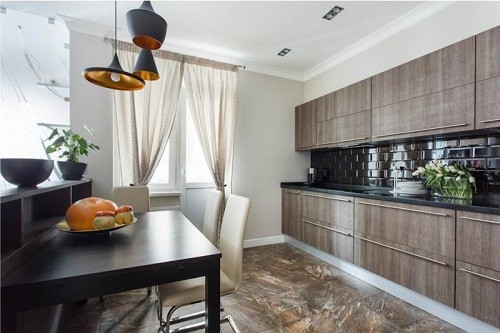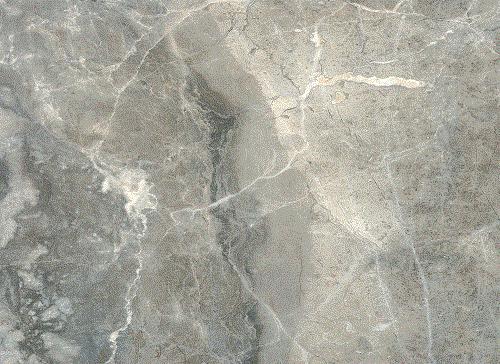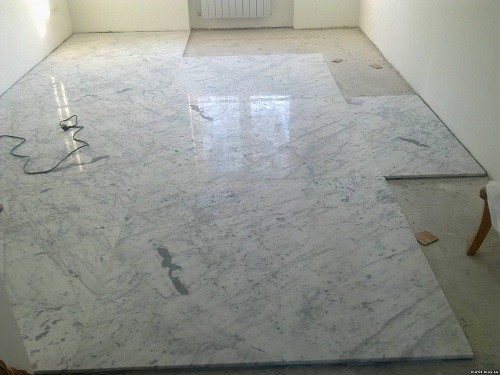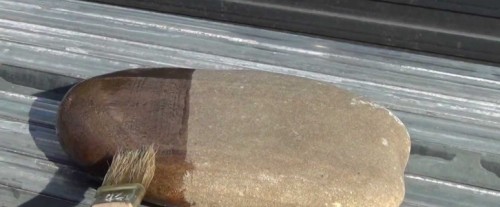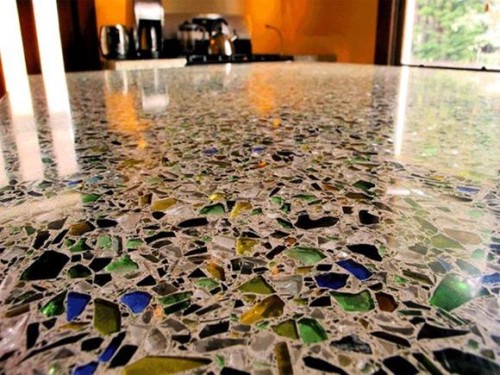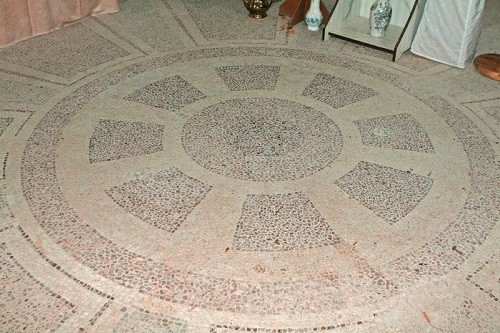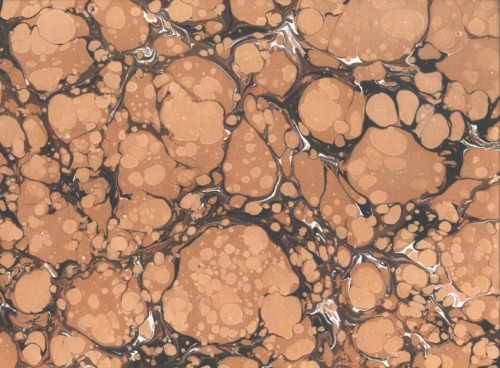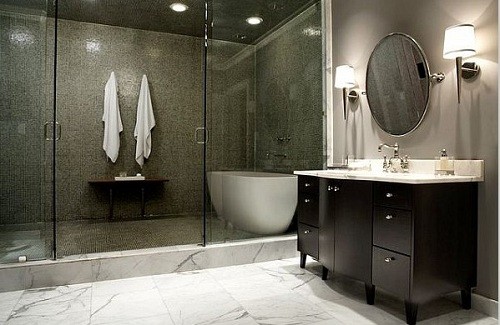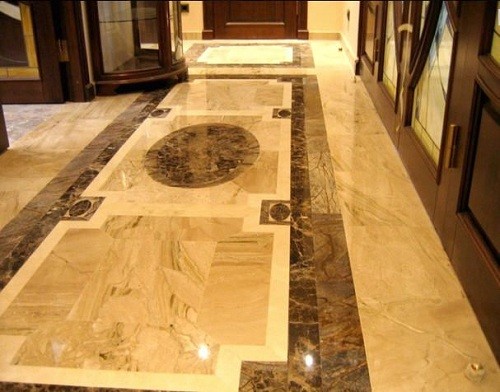
Stone Floors: Beautiful Designer Solution Floors,Building materials
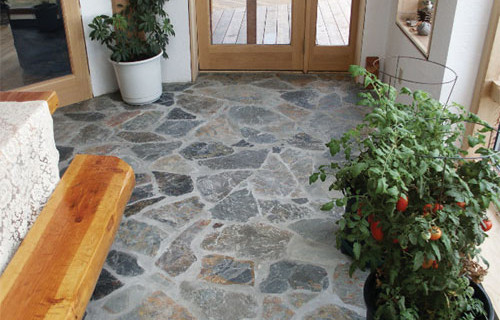
Making floors from natural stone is practiced since ancient times. Today there are a lot of alternative ways to finish, however, it is the natural stone that is one of the most desirable and prestigious coatings. In this article we will talk about what principles are guided by the selection of stone coating and how the floor finish occurs.
Content
Selection of material
If you figure it out, the stone floors are the progenitor of all other coatings, since the first thing that learned to process a person is a stone. First, these were elementary wipe and crane sites, later the creation of smooth and beautiful sex began to acquire the features of the real industry. As a result, with the development of technology and artistic thought, we can choose floors from stone for any interior. Like any natural material, the stone creates a unique atmosphere indoors.
Designers constantly use facing materials from natural and artificial stone when creating new linecas and directions in the art of interior design. And since recently the trends in this area are increasingly inclined towards eco-design, the popularity of stone floors is gaining momentum.
However, such a coating appreciate not only for environmental friendliness and naturalness. Stone floors are considered one of the most durable and durable compared to coatings made of other materials, including metal. They have a practically unlimited service life, and to make sure that it is enough to go on a tour of any Palace of the rulers of antiquity. High strength allows you to use a stone in rooms with increased permeability. The exceptions make up except that some varieties of marble, but here are granite and porcelain stonewares that we will talk about a little later, decades preserve the initial appearance.
Stone is universal materials for decorating. He harmonizes almost with any other finish, be it tree, glass, metal or synthetics. At the same time, the stone always inspires the feeling of reliability, immutability and stability. This is a very important and subtle psychological moment, which can be useful to you when making an office interior, a personal working office or living room. Despite its cold, the stone helps to gain confidence, calm down and relax.
Today, the floor under the stone can be made not only from fragments of solid rock, but also with the help of special facing tiles. Modern technologies allow you to create a cheaper material with the preservation of the original characteristics of the original or even with an improvement in them, as in the case of porcelain.
Useful advice: acquiring facing plates from natural stone, pay attention to the quality of the facets and geometry of products. If the slightest deviations from the permissible norm, it means that you are defective products.
A distinctive feature of cladding from natural stone is the uniqueness of the picture. This suggests that the material was produced in natural "unpredictable" conditions. However, there is a permissible range of discrepancies of shades and textures of tiles from one batch. Objectively evaluate these differences only a specialist is capable, so when buying should separately specify the degree of deviation.
Selecting the flooring for the room with a high level of humidity, pay special attention to the surface texture and rock rock. Many breeds have a porous structure that strongly absorbs moisture and because it can change the color. The most characteristic example is porous inhomogeneous marbles. It should also be borne in mind that terribute minerals may be present in the stone, which, when in contact with water, will overreight, will provoke a change in the color of the floor.
Stone breed
To cover the floors, only few rocks that differ from either high durability or special aesthetic are used. Basically, these are resistant types: shale, marbles, granite, etc.
Consider several of the most popular species used for flooding floors:
- Granite is one of the most durable mineral breeds known to man. In fact, granite is called the cooled maghos of volcanoes, spent thousands and millions of years ago. The granite floor is distinguished by extreme strength, resistant to abrasion, is completely not afraid of high humidity and direct contact with water. The material is ideal for finishing the premises with high permeability, kitchens, bathrooms, pools. The granite tile is distinguished by a uniform pattern and a rich color palette. Often there are interesting mineral and glands, forming operational characteristics, a unique appearance and affecting pricing.
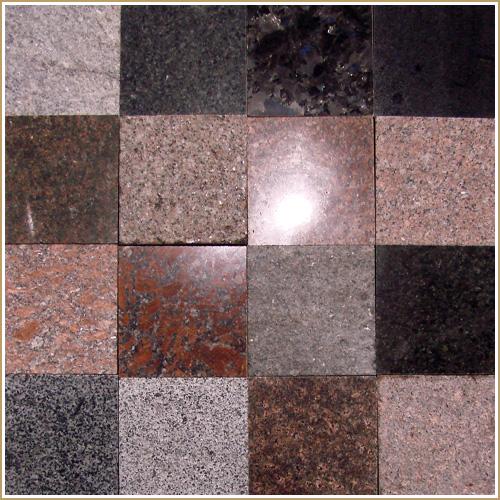
- Porcelain stoneware - modern manual finishing material, which combines the best qualities of ceramics and granite. Porcelain stoneware has no pores, microcracks or some internal voids, and therefore can be in contact with water for a long time, it is not afraid of acids, alkalis and household chemicals. For the same reason, it is much stronger and durable of ordinary granite. For floor cladding in the kitchen it is difficult to come up with a more suitable material. One of the most important advantages of porcelain stoneware is the possibility of imitation of any breed of stone. In other words, you can decorate the house with an excellent "marble" floor, which will be much stronger, more durable and cheaper than real marble. The texture of the porcelain book can be matte or glossy (glazed). Matte tile does not pass grinding and finishing treatment after firing, and therefore it is distinguished by exceptional wear resistance. If the tile is exposed to glazing, it is better to contact her more carefully. And in the first, and in the second case there are advantages and disadvantages. So, on the matte porcelain gender it is impossible to slip, but it is difficult to wash it. Polished smooth surfaces are very beautiful, but require careful circulation. They are better not to stack in rooms with high passability, not to drop anything heavy on the floor, but on the legs of the furniture to install rubber gaskets.
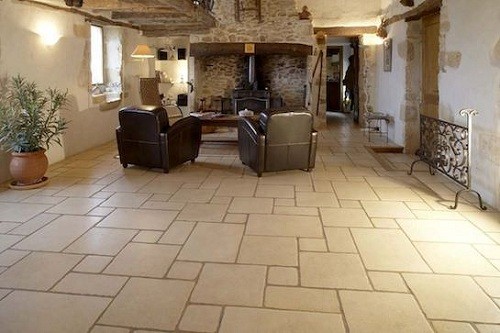
- Marble - this breed is used for the interior decoration of the premises since antiquity. People immediately estimated the strength, durability and beauty of marble. All sorts of color variations of the stone make it possible to make the original floor covering, which, with due use, can serve for thousands of years. Evidence of this is the monuments of the ancient Roman and Greek architecture with amazing mosaic floors that have come to this day in perfect condition. Due to the various extraneous inclusions of metal oxides and graphite, the stone can purchase a pink, yellow, red, green and even black shade. But the special beauty of the mramor is attached to accomplishments that form a unique drawing.
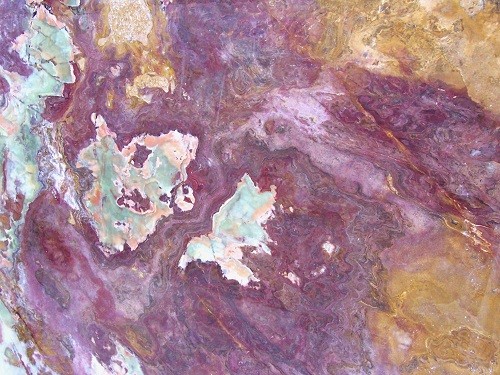
Useful advice: Natural floor of marble or granite should be chosen, focusing not only on the decorative properties of the stone, but also on its volumetric weight. This is especially true if you work with the floor on the second or third floor of a private house or in a high-rise building. Otherwise, there is a risk that the intergenerational overlap will not withstand the load.
Stone texture
Any interior designer when creating a new project takes into account the texture of facing material. In the case of natural stones, not only the appearance, but also the practical side of the issue depends on this.
Depending on the nature of the processing, the following types of natural stone faults are distinguished:
- Polished - in this case, the drawing and color of the stone are manifested most pronounced. As a result of the processing, the plates acquire a mirror glitter and can reflect objects. This allows you to visually increase the area of \u200b\u200bthe room, and due to the fact that the floor will give glare from the lighting instruments, the room will be even lighter. But there are one significant disadvantage in polished plates - they are not recommended to mount them in rooms with high humidity, because during wets they become very slippery. The exceptions are products with activist stripes, but they no longer differ in such decorativeness.
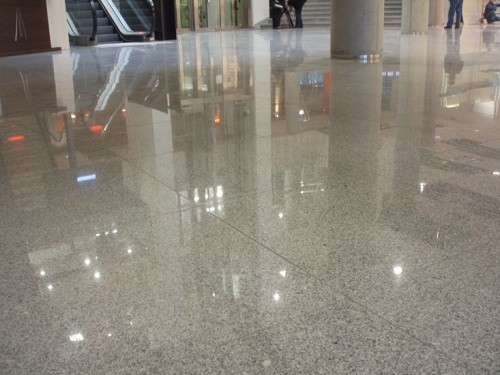
- Matte - smooth plates with a velvety-matte face, on which the pattern is clearly visible. Thanks to a special gentle grinding, a maximum of decorative qualities is maintained, but the coating becomes not so slippery during wetting, so it can be put in the bathroom and in public spaces.
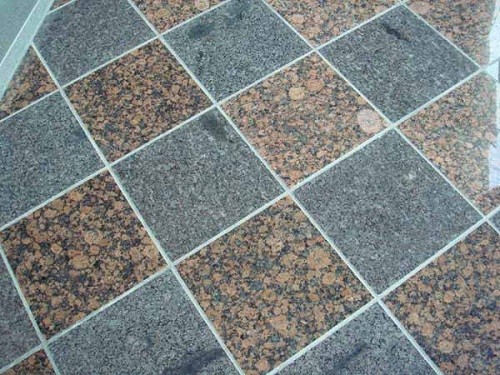
- Grinded - tiles with a uniformly rough face with different irregularities high up to 0.5 mm. As a result of rigid grinding, the stone drawing becomes indistinguishable and smoothed. Such processing is not suitable for dark patterned stones, since their drawing becomes uniform and loses uniqueness. As a rule, polished stoves are used for the outer decoration of floors and steps.
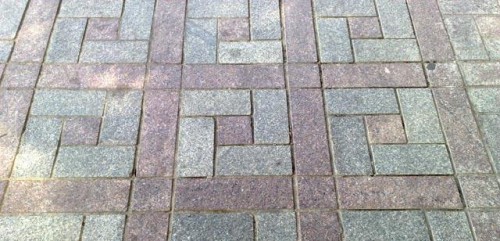
- Artificially aged - mainly such treatment is subject to products from soft and porous marble, since as a result they become more elegant and textured. In the interiors, artificially aged cladding can be found mainly on borders, rotunda or outlet.
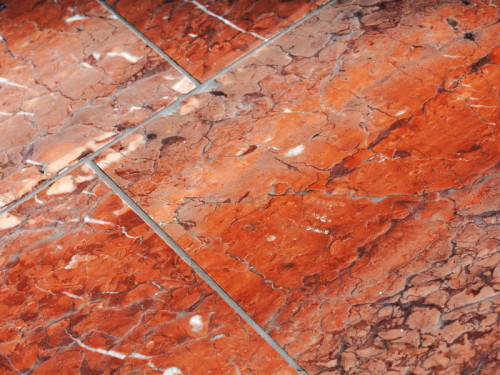
- Processing sandblasting - a cladding that has been treated with sandblasting is very popular, because it is completely invisible scratches, it does not slide and resistant to abrasion.
Technology laying
Facing floors with natural stone, by and large, no different from laying tile or porcelain tile, however, there are some nuances of technology, depending on the base material.
Modern methods of laying floors from stone:
- On glue - it is necessary to use a special adhesive mixture for a stone tile. To apply glue to the base, use a toothed spatula - so you evenly distribute the solution over the surface and avoid the occurrence of large air emptiness. Try to work as quickly as possible so that the applied glue does not have time to be covered with a film, otherwise the adhesion strength with facing material will significantly decrease. So that this does not happen, apply the glue gradually into small areas of the base. The drying time of the solution also depends on the air temperature in the room - it should be not lower than + 5c and not higher than 35c.
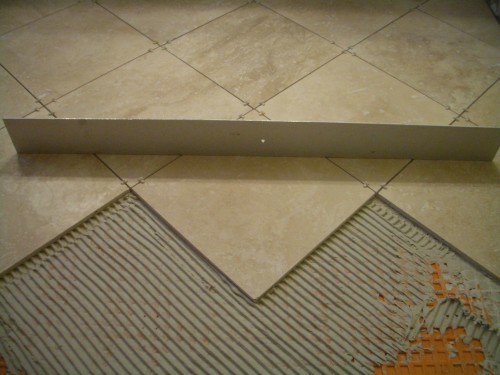
- For cement - in some cases, cladding of floors with a stone with a cement mortar is admissible. To do this, it is necessary to mix 3 parts of the sifted fine river sand with 1 part of the M300 or M400 cement cement, after which it gradually add cold water to get a thick sour cream-like consistency. Apply the solution to the floor, align the surface and press the stone tile, after which it is to be treated with rubber xy. After laying, fill the seams between the elements of cement-sandy milk. To do this, mix 70% cement with 30% of small sand and dig everything with water so that it turns out a liquid blessed substance.
Useful advice: Installation of marble slabs requires special conditions, because due to the porous structure, the material can absorb too much moisture, which will eventually appear in the form of ugly spots. That this does not happen, marble cladding must be attached using special quick-drying adhesive mixtures. For specially delicate marbles, an anhydrous epoxy-based adhesive is available.
Stone care and protection
In order for the stone floor to serve as long as possible and at the same time retained its original appearance, after stacking it is recommended to be treated with protective compositions. You can find a mass of protective products designed specifically for a particular stone of stone. The floor tile treated with such a means becomes an immune to the effects of chemistry, water, dirt, etc. At the same time, anti-slip and decorative characteristics of the surface remain unchanged.
To protect the fresh stone floor, you must first clean it from the remnants of glue or solution, dust and other extraneous materials. To do this, first use the vacuum cleaner, and then process the surface with a cleansing agent. Cleaners can be two species: for materials insensitive to household chemicals and acids, and for sensitive. The first are suitable for the non-polished granite, ceramic tiles and a terracotta, the second - for marble, polished granite, dashest stone, Venetian mosaic, etc. The means must contain the appropriate information on the label.
When the floor is purified, you need to cover it with a special impregnation. Impregnations There are also several varieties depending on the operating conditions of the floor and the material from which it is made: for the inner and outer decoration, for marble, granite, to enhance the hydrophobic qualities of the floor, to protect the polished surface from scratches, etc.
Caring for the stone floor involves the use of suitable detergents. For example, polished plates should not be cleaned with abrasive mixtures or rigid brushes, otherwise they will very quickly lose their appeal. Once a year, test the surface on the subject of scratches and cracks, if necessary, update the impregnation layer, and then the finish will delight you for many years.




